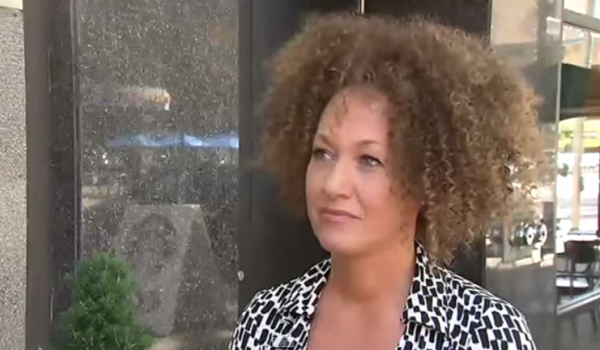
One of the weirdest stories to hit the news cycle last week was of Rachel Dolezal, the head of the NAACP in Spokane, Washington, who reportedly lied about her race, according to BuzzFeed.
On the Today Show, she defended herself, telling Matt Lauer, “I was drawing self-portraits with the brown crayon instead of the peach crayon, and black curly hair.” She continued, “I identify as black.”
On June 11, a local newspaper called The Spokesman-Review uncovered evidence that both her parents identify as white, with European origins.
The Internet is abuzz with speculation about her motives—the most convincing that she has a personality disorder in which she is compelled to seek attention—and there’s almost as much to be said for why we’re fascinated with this story of racial passing.
Of note is that Dolezal is an artist, making work from what seems to be a black identity. She received an MFA in experimental studio with a minor in sculpture from Howard University, a predominantly black college, by submitting “African-American portraiture,” according to the Washington Post. The Post also reports that Dolezal marked African-American on her application, and received a full-tuition scholarship to Howard.
She parlayed her MFA into a career as an “award-winning Mixed Media Artist with over 20 exhibitions in 13 states, internationally, and at the United Nations Headquarters [sic],” according to her artist website. She also lists art professor positions at Eastern Washington University and North Idaho College (most famous for being one of the five colleges Sarah Palin transferred to), and describes herself as an advisor for the NIC Black Student Association.
The whole thing calls to mind Joe Scanlon’s Donelle Woolford project (see A Wake-up Call for the Whitney Biennial 2014), but entirely without guile, but perhaps is even more closely a descendant of John Howard Griffin’s Black Like Me, a 1961 non-fiction book following Griffin as he traveled through the South while passing as a black man. That, too, however, was done with a purpose. But Dolezal’s work seems to be done with a deep sincerity, making it something of a window into her delusions. (See The Yams, On the Whitney and White Supremacy.)
Jenn Kidwell as Donelle Woolford.
Photo: the Kitchen.
On her website, Dolezal has 43 artworks on display, ranging from linocut reduction prints, pastel on fiber paper, bas-relief on deer hide, cut paper collages, photography, oil paintings, an installation, and a bronze sculpture. Dolezal is clearly making work from a black identity.
Most of the paintings are portraits of black subjects. In Utterance, an acrylic painting made on strips of elk hide and marked as “SOLD,” a black man stands on a balcony and bellows. My Place, an acrylic on panel with puzzle pieces set into the panel, depicts a young black girl in front of a natural landscape, and is described by Dolezal on the site: “This image is about connecting parts of myself and finding my sense of place. The background is a sunset where I was born in Montana, and the model is a girl in Cape Town, South Africa, where my family lived for 5 years.”
The Great Escape is a bas-relief sculpture made on deer hide. In it, a brown figure runs from three imposing white figures with pointed heads. “My son calls this piece, ‘The KKK Stuck in the Brown Space,’ which may be better than the original title,” Dolezal writes underneath.
Dolezal recently got into hot water over an acrylic painting titled The Shape of Our Kind which Twitter users found bears a striking resemblance to J.M.W. Turner’s 1840 painting, The Slave Ship.
On one YouTube video that had only a handful of views when we checked last week, Dolezal sits in front of a camera holding a glass of white wine—her fingernails painted in solid gold—in front of one of her paintings, upon which she has placed several bills, and opines on the relationship between money and art.
“If you’re an artist, [you’re] selling your art, or if you’re a musician, [you’re] selling your music and performances, so a lot of our lives are driven by earning this stuff right here,” she says, pointing to the currency on her painting. “This is connected to art history, and has imagery on it that has a very political propaganda element in terms of reminding us that older white men were in charge and still to this day, in a majority sense, are.” (See In Wake of Baltimore Protests, Artist Paul Rucker Spotlights Racism’s Legacy).
artnet News reached out to Dolezal for comment, but she did not return phone calls.